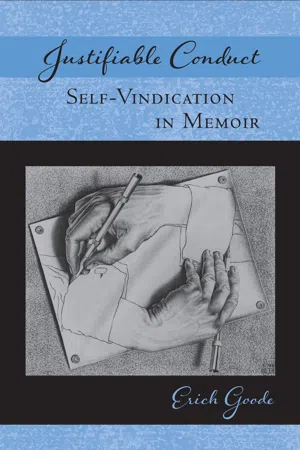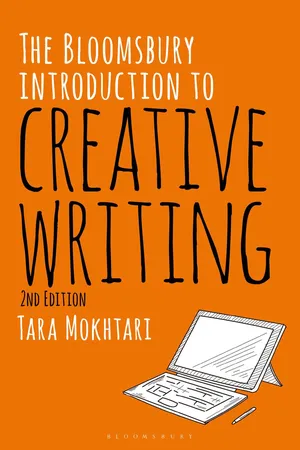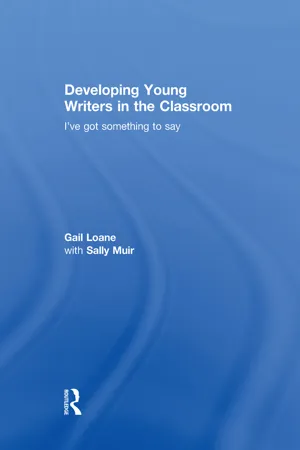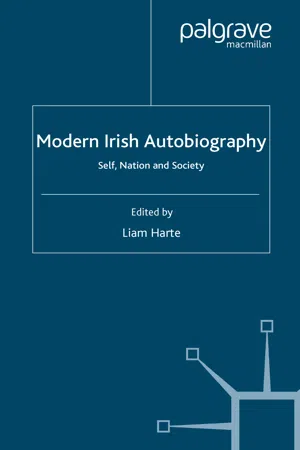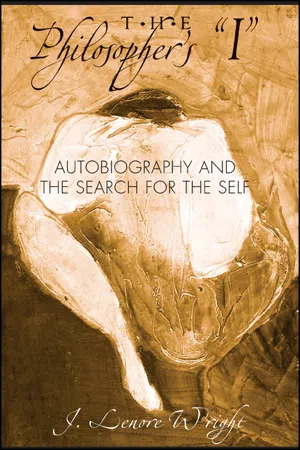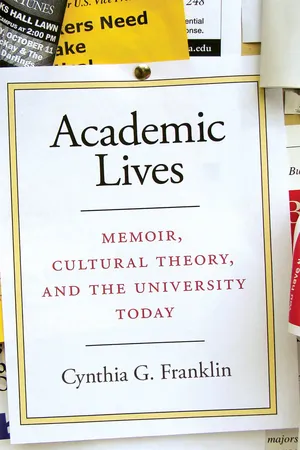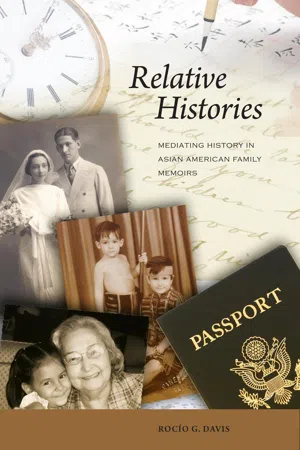Literature
Memoir
A memoir is a non-fictional narrative that recounts the personal experiences and memories of the author. It often focuses on specific events, relationships, or periods in the author's life, providing insights into their thoughts, emotions, and reflections. Memoirs offer a unique perspective on the human experience and can be powerful tools for understanding different lives and cultures.
Written by Perlego with AI-assistance
Related key terms
1 of 5
10 Key excerpts on "Memoir"
- eBook - PDF
How to Make Believe
The Fictional Truths of the Representational Arts
- J. Alexander Bareis, Lene Nordrum, J. Alexander Bareis, Lene Nordrum(Authors)
- 2015(Publication Date)
- De Gruyter(Publisher)
It is not a strict genre category with clear boundaries or an essential character, but, as with other literary genres, there are some literary conventions that re-main constant throughout the narratives that we classify as Memoir. Historian of Memoir Ben Yagoda (2009, 1) defines Memoir as a narrative “understood by 98 | Sarah E. Worth its author, its publisher, and its readers to be a factual account of the author’s life”. Memoir is often differentiated from autobiography in that Memoir only covers a portion of a life, whereas autobiography usually covers an entire life. The exact designation of these genres is anything but static, and the functional designations of the two genres have reversed over the centuries. The Memoirs I am concerned with are primarily contemporary ones which make claim to accu-rate representations of life events, but have failed in some significant way. I will consider theories of fiction, which are distinct from the literary genre of fiction, in order to help explain how it is we approach narrative texts desig-nated in a particular way. I take the theoretical approaches to fictionality to be related to my discussion of Memoir in non-incidental ways. Memoir has some reliable, documentable reference to actual events. It subscribes, perhaps, to a narrow correspondence theory of truth. Many people think truth is merely that which can be documented or otherwise supported by testimony – merely that which can be said to have ‘really happened’. What is not documentable or veri-fiable is the insight gained by one who experiences a certain event. This insight is often one of the most rewarding aspects of a Memoir for its readers. One’s perspective is not something one can prove with documentation. Without in-sight , Memoirs would merely be lists of places, people, and events. These chronological lists are hardly gripping stories, devoid of the plot devices woven in for coherency and intrigue. - eBook - PDF
Justifiable Conduct
Self-Vindication in Memoir
- Erich Goode(Author)
- 2012(Publication Date)
- Temple University Press(Publisher)
This seems to me to be the distinction that is truest to the currently accepted use of these terms. As the term is now used, a “Memoir” is a first-hand biographical account, replete with observations and expressions of emotion, of an aspect or the whole of a life, written largely from personal knowledge or experiences. The term derives from the French word for memory, and hence, the Memoir pre-sumably heavily depends on recollections or remembrances of past events. Instead, an autobiography usually describes the narrative details of a life, either in whole or during a specific, prolonged period (such as “the autobiog-raphy of my youth”). Typically, as Vidal explains, an autobiography demands fact-checking, the marshaling of historical documents, dates, and the recon-struction of a narrative sequence. Both, however, mostly share the same POV: a first-person, author-centered voice. The first person singular “I” is always the most common pronoun in both genres. Both are “about the author,” and in both, the author is usually the central subject matter of the book. Consider the following passage: “I was born on 11 August 1910, the eldest child of Robert and Abigail (Adams) Homans, at 64 Beacon Street . . . in the Back Bay district of Boston.” This is the better part of the opening sentence of an autobiography, Coming to My Senses (1984), by George Caspar Homans (1910–1989), a distinguished Harvard professor of sociology and the scion of a prominent Boston family whose forebears included bankers, physicians, lit-erary figures, and offi cers serving in the Revolutionary War, not to mention a couple of presidents, the Adamses. The details of the book’s first few pages supplies much of the who, what, when, and where traditionally included in the autobiography. They unmistakably set the author’s life into an economic, social, and historical context. Coming to My Senses details the facts of the matter of Homans’s life. - eBook - ePub
- Tara Mokhtari(Author)
- 2019(Publication Date)
- Bloomsbury Academic(Publisher)
Elucidated here is a foundational value of literature and concurrently also a clue as to the type of writing not generally considered literary. Literary texts seek to work as something free from the crutches of true life, even when true life is the inspiration behind the text to a great extent. Whereas something like the news article is interesting to read because it represents something of the real world and has some practical application (even if that just means informing our understanding of current events), the literary text values autonomy from the real world as an art form. This idea is as vital to creative writing technique as it as method for evaluating existing literature. It reminds us writers not to get trapped in the confines of reality when we’re trying to tell a story. Just because something looks a certain way in real life doesn’t mean we can’t make it sound much more interesting in our writing by layering the memory of observation with our subjective reflections and creative responses.As a literary form of self-writing, Memoir is not written merely to record a series of real events in the author’s life for the purpose of informing the reader of an objective history. Instead, Memoirs might be written to explore the personal or existential significance of certain events, to illuminate the poetry of the everyday and turn something that is necessarily real into something that is engaging regardless of whether or not it really happened. As Ian Jack wrote in an article for The Guardian back in 2003:The Memoir’s ambition is to be interesting in itself, as a novel might be, about intimate, personal experience. It often aspires to be thought of as “literary,” and for that reason borrows many of literature’s tricks—the tricks of the novel, of fiction—because it wants to do more than record the past; it wants to re-create it. If a Memoir is to succeed on those terms, on the grounds that all lives are interesting if well-enough realised, the writing has to be good.3This idea of recreating history is terribly emancipating. As the writer, it gives you the opportunity to turn your past into an adventure story, and as the reader it means you don’t have to get bogged down in the frustrating nuisance that is often the reality of somebody’s life story. Think Grampa Simpson:One trick is to tell them stories that don’t go anywhere. Like the time I caught the ferry over to Shelbyville. I needed a new heel for my shoe. So, I decided to go to Morganville, which was what they called Shelbyville in those days. So, I tied an onion to my belt, which was the style at the time.4 - eBook - PDF
A Companion to Cultural Memory Studies
An International and Interdisciplinary Handbook
- Astrid Erll, Ansgar Nünning(Authors)
- 2008(Publication Date)
- De Gruyter(Publisher)
Life-Writing, Cultural Memory, and Literary Studies M AX S AUNDERS “Life-writing” is a contentious term. It covers a wide range of texts and forms. Indeed, its contentiousness arises at least partly because it seems, to some, to cover too many. As one leading British biographer, Hermione Lee, writes, it is sometimes used “when different ways of telling a life-story—Memoir, autobiography, biography, diary, letters, autobiographical fiction—are being discussed together” (100). This is the main sense in which I shall be using it. Though, as Lee notes, another main usage is “when the distinction between biography and autobiography is being de-liberately blurred” (100). Critics sometimes use the term “auto/biography” to indicate this generic fusion (or, again, as a shorthand for talking of the genres autobiography and biography together). The term “autobiography” was coined as Romanticism took shape towards the end of the eighteenth century. Paradoxically, this is also the period in which the view began to emerge that all writing had an autobiographical dimension. According to this view, which became increasingly consolidated through the nineteenth century, and which is even shared by Postmodernism, the distinction be-tween autobiography and other forms such as biography or fiction is thus always already blurred. The two senses distinguished by Lee are then not as distinct as they might have seemed. A Memoir of someone else, by virtue of the fact that you are writing about them because they were im-portant in your life, will be part of your autobiography. That scholars are prepared to spend years of their lives immersing themselves in the biogra-phies of others tells you something about their biographies. To some ex-tent they are writing displaced autobiographies; and that vector of dis-placement is what lends even the most scrupulously factual biography its admixture of fictionality. - eBook - ePub
Developing Young Writers in the Classroom
I've got something to say
- Gail Loane(Author)
- 2016(Publication Date)
- Routledge(Publisher)
6 MemoirThe polished lens of memory
Memoir as narrative
Most autobiographies are a series of Memoirs. If they were merely a chronological list of events remembered, they would probably never get into print. There are the predictable authors of autobiography – the celebrities, who have led an extraordinary life – but there are also many written by people who have lived a life which is very ordinary. What makes their stories reach publication, and become eminently readable, is the way that the writers have recognised themselves, and the way they felt and reacted, in the most ordinary as well as in extraordinary circumstances. Other people’s lives and their responses to the world interest us because we are part of that same world. We recognise sameness, even when the writer may have lived on the other side of the world and had quite a different upbringing from ourselves.This recognisable sameness became a valuable instrument in leading a twelve year-old student of mine to becoming a fully paid-up member of our writing team. She had arrived from another school, and was evidently feeling something of an outsider as she observed the writers’ workshop that was routine in our class: the jotting, the drafting, the sharing, the peer response, and so on. One day she decided that she too had a significant moment from her early years to recall in writing – a time when she had suffered the embarrassment of wetting her pants in the town’s main street. As she tentatively offered a draft of her personal story and I began to read, I was instantly reminded of a published Memoir of Maya Angelou I had just been reading. My student had recorded her own remembered event and had included the words I felt so embarrassed. I thought to myself, ‘Amy now needs to know about showing rather than telling.’ I reached for the copy of I Know Why the Caged Bird Sings - eBook - ePub
Writing Life Writing
Narrative, History, Autobiography
- Paul John Eakin, Paul Eakin(Authors)
- 2020(Publication Date)
- Routledge(Publisher)
mémoires , I will ask what kind of match exists for this genre in American life writing, citing some characteristic examples. Then, moving beyond traditional models of Memoir, I will present a hybrid form in which autobiography and Memoir come together to support the individual’s negotiation of his or her place in the larger history we call history.Let me start with the situation in France. In a recent paper, Jeannelle defines mémoires as follows:The very function of the Memoir is to reveal the social and political archaeology of a national community through the story of one’s life . . . [Memoirs] don’t aim for self-knowledge (as autobiography does) but for the agreement of the national community and future generations about the historical representativeness or the moral exemplarity of the author’s life.To structure his model of the Memoir, Jeannelle proposes two distinctions. First, he posits that “all life-writing texts” can be organized “around two poles: the autobiographical one for personal and introspective accounts and the egohistorical one for memorable accounts (whether they present directly as Memoirs or as testimonies, chronicles, diaries, etc.).” To this first distinction, between the autobiographical and the egohistorical, Jeannelle adds a second one, between “major lives” and “ordinary lives,” between lives that “work as landmarks in our collective memory” on the one hand and on the other lives that reflect the “humble existence of anonymous people.”2 This is the distinction, we might say, between Charles de Gaulle and the peasant woman Mémé Santerre, between history and ethnography.3 In fact, for Jeannelle, de Gaulle’s Mémoires de guerre offers the paradigmatic case of the “major life” in which the central player on the French historical stage has the power—in a climactic moment on the Champs Elysées at the end of the war—to “give his nation back to herself” (“Twentieth-Century”). In identifying with him, his compatriots affirm their tie to the nation.4 - eBook - PDF
Modern Irish Autobiography
Self, Nation and Society
- L. Harte(Author)
- 2007(Publication Date)
- Palgrave Macmillan(Publisher)
Here’s one small anecdotal instance of what I mean. When my work began to appear, many people told me that, on reading it, they had been reminded for the first time in years of such-and-such a name, or an event or a turn of phrase, so much so that I began to bridle at the evident risk of being turned into a designated memorialist. Yet, of course, my readers were simply highlighting an aspect not only of what I do but of the kind of thing that tends to happen generally when writing autobiographically. In recalling his or her previous selves, the autobiographer recalls the matrix from which those selves emerged, namely, the former selves and earlier contexts of everybody, to a greater or lesser degree. This aggregative need or gesture may be a reason why I think of what I do as tending towards Memoir or, in the spirit of the hybridity which pervades the very idea of the recollected self and which gives the idea a special if often camouflaged status in Ireland’s hybridised culture, Memoir with an autobiographical admixture. Instead of a hair-splitting disquisition on genre, let the following working definitions made by Perry Anderson suffice for now: a Memoir can re-create a world lavishly peopled with others, while saying very little about the author himself. An autobiography, on the other hand, may take the form of a pure portrait of the self; the world and others featuring only as mise en scène for the inner adventures of the narrator. (2004: 23) Another discovery, then: it isn’t possible to write merely of oneself or for oneself. - eBook - PDF
The Philosopher's "I"
Autobiography and the Search for the Self
- J. Lenore Wright(Author)
- 2012(Publication Date)
- SUNY Press(Publisher)
Autobiography is a special mode of first-person writing that merges these sets of conditions into one expressive literary form, allowing the autobi- ography to be both a genre of literature and an interpretation of experience. For although we do not and cannot confront ourselves as others do, we do, as Georg Misch maintains, possess ourselves as beings conscious of ourselves and capable of uttering ‘I.’ 28 We sometimes choose to shed some of the masks that we wear and treat ourselves as an other, a person independent of the being we confront every day. In these instances, the ‘I’ becomes a ‘you,’ revealing the I-you characteristic of the self-in-the-world (the linguistic self ). 29 To be sure, literary conventions liberate and constrain first-person philo- sophical writing. On the one hand, they offer the philosophical writer methods for self-representation ordinarily unavailable to philosophers. 30 On the other, they muddle the view of the self so clearly expressed in philosophical terms, adding ambiguity to texts in which many writers aim for clarity. Accordingly, Misch argues that autobiography and its fluid boundaries “can be defined only by summarizing what the term ‘autobiography’ implies: the description (graphia) of an individual human life (bios) by the individual himself (auto).” 31 By exten- sion, autobiographical writing imposes no particular style or form upon the writer. It simply conveys the fact that the life circumscribed by the writing is the writer’s life in his or her own words. 32 Yet the rhetorical space in which the ‘I’ appears reshapes our traditional notion of subjectivity. 33 First, by acknowledging one’s audience and adopting a rhetorical stance toward that audience, autobiographers give rise to a rhetori- cal subject. 34 Initially the author’s existence is dependent upon the writer’s ex- istence (conversely, the writer’s existence is not dependent upon the author’s existence). - eBook - PDF
Academic Lives
Memoir, Cultural Theory, and the University Today
- Cynthia Franklin(Author)
- 2010(Publication Date)
- University of Georgia Press(Publisher)
A number of critics have read academic Memoirs as evidencing a reaction against postmodernism or a fatigue with poststructuralist theory (Simpson), as unfortunate by-products of the academic star system (David Shumway), or as the self-indulgent products of middle-aged academics experiencing identity crises (Adam Begley). Other critics have been more welcoming, championing Memoir for its “crossover” appeal (Michael Bérubé), its democratizing capacities (Jill Ker Conway), and its feminist realization of the personal as political (Nancy Miller). 3 Academic Lives complicates these claims, for even if there is some measure of truth to each of them, they do not cap-ture the complex story that accounts of individual professors’ lives have to CHAPTER 1 2 chapter 1 tell about the current cultural and political climate in the academy. One of this book’s central contentions is that Memoirs afford crucial insights into the academy because, in offering spaces that are more musing and pliable than those afforded by theory, they can display contradictions be-tween the personal and political without having to reconcile them. The free play and seeming frivolity that accompanies the genre con-stitutes not grounds for its critical dismissal but engagement: academic Memoirs provide not only an index of scholars’ lives and why they matter, but also unparalleled ways to catch the currents that define the U.S. acad-emy. I believe that, in part, academic Memoirs have not received sustained critical analysis on the grounds that they are seen as simply affording “pri-vate,” or prurient and indulgent, sometimes embarrassing, glimpses into an often well-known academic’s life—like their now-defunct contempo-rary, Lingua Franca (the People magazine of academe), they seemingly constitute reading “on the side.” 4 Memoirs enable academics working in the humanities to escape from the self-reflexivity that the increasingly politicized realm of literary studies has come to demand. - eBook - PDF
Relative Histories
Mediating History in Asian American Family Memoirs
- Rocio G. Davis(Author)
- 2010(Publication Date)
- University of Hawaii Press(Publisher)
9 Chapter 2 Family Memoirs in the Context of Auto/biographical Writing Mediating History, Promoting Collective Memory “So, why are you calling this a me -moir?” Ken asks when I sit him down to read pages, still warm from the printer, in which my versions of events often mixes with the voices of others in my family: “It’s a we -moir.” —Kirin Narayan, My Family and Other Saints I n his book, Oneself as Another, Paul Ricoeur explains that identity is partly bound up in identification with significant others, which is the reason why, especially in autobiographies, writing the self implies writing the other. This idea resounds with one of the key insights in autobiography theory in the 1990s, namely that identity—for both men and women—is essentially rela-tional, formed and defined in relation to others. As Laura Marcus points out, “Recounting one’s own life almost inevitably entails writing the life of an other or others; writing the life of another must surely entail the biographer’s identi-fications with his or her subject, whether these are made explicit or not” (274). Relational approaches to life writing complicate notions of self-representation by privileging the intersubjective rather than the merely individual. This per-spective challenges the uncritical notion of the autonomous self—the idea that one alone defines and creates him/herself—traditional to Western theories of life writing. And indeed, the proliferation of family Memoirs only proves this point. The Asian American challenge to the pervasive Western notion of the individual as the prime subject of autobiography began with Maxine Hong Kingston’s The Woman Warrior (1975), which illustrates how the first person in autobiography is, as Eakin argues, “truly plural in its origins and subsequent formation,” as it addresses “the extent to which the self is defined by—and lives in terms of—its relations with others” ( How Our Lives 43).
Index pages curate the most relevant extracts from our library of academic textbooks. They’ve been created using an in-house natural language model (NLM), each adding context and meaning to key research topics.

